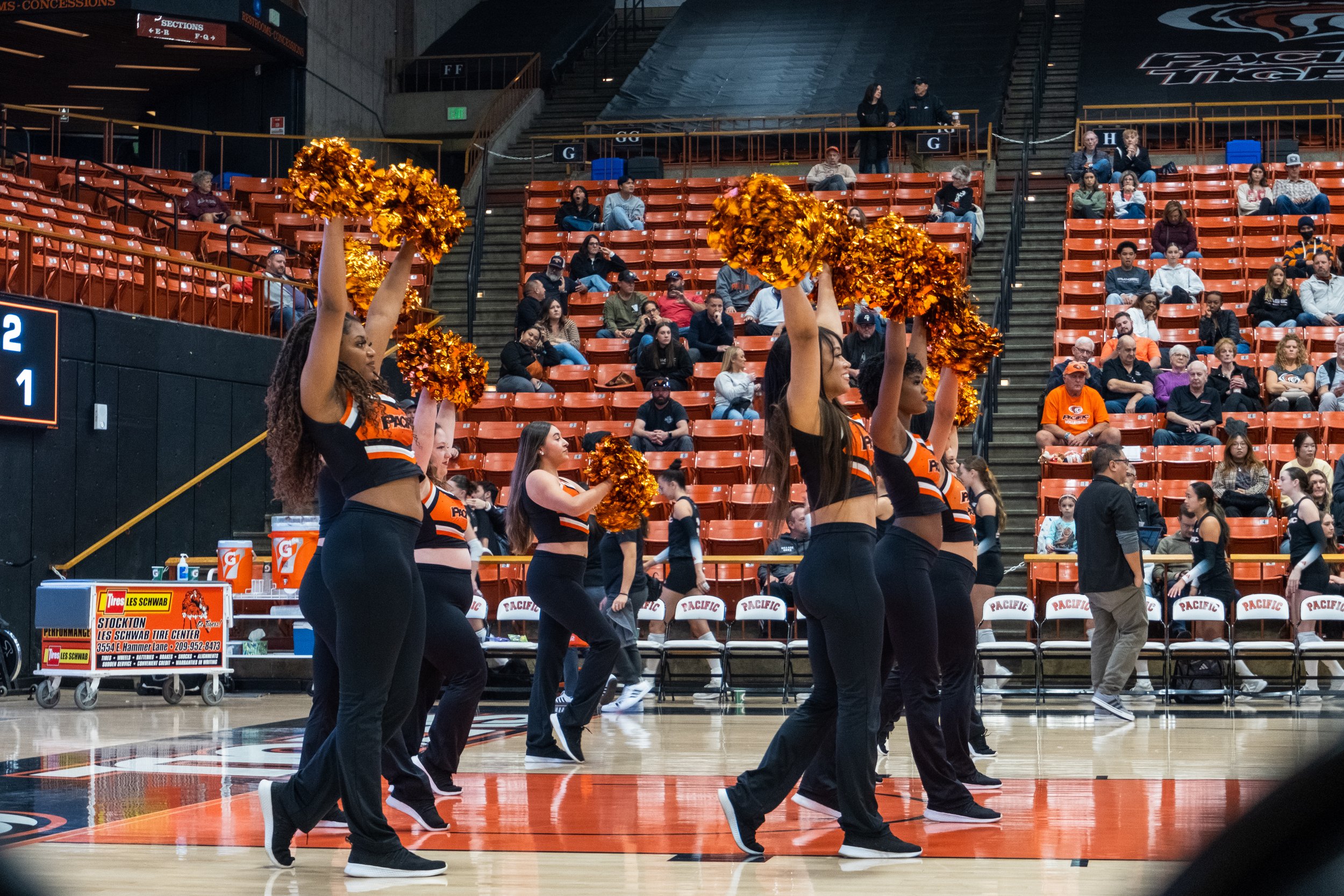Another One Bites the Dust in the West Coast Conference
Photo taken by Mōhailani Peloso
What do WCC shifts mean for the Tigers?
The Tigers will face new challenges and opportunities with the departure and addition of key teams within the West Coast Conference (WCC).
The West Coast Conference, based in the western U.S., currently has nine teams for the 2024-2025 season: Santa Clara University, University of San Francisco, University of San Diego, Saint Mary’s College of California, University of Portland, Pepperdine University, Loyola Marymount University, University of the Pacific, and Gonzaga University. However, Gonzaga will leave in 2026 to join the Pac-12 Conference. Additionally, Seattle University plans to join the WCC in 2025. Grand Canyon University was also expected to join the WCC in 2025, bringing the conference to ten teams after Gonzaga's departure, but their invitation was rescinded after a lawsuit for breach of contract when the university announced plans to join the Mountain West. Thus, only Seattle University will be joining the WCC.
The rapidly changing sports landscape, fueled by Name, Image, and Likeness deals and the transfer portal, is reshaping conferences across the country. The Pac-12, following the departure of five teams to the Big Ten and Big 12, is adding six new members, including Gonzaga. Despite interest in Grand Canyon and Saint Mary’s, the Pac-12 chose to focus on schools with football programs. With Gonzaga leaving, Grand Canyon backtracking its commitment, and Seattle now as the new addition, the West Coast Conference is definitely being shaken up. The biggest hit will be less media exposure, but it will definitely not affect the WCC’s budget. The conference matchups do, however, become more critical.
The Pacific Women’s Basketball team holds a 5-0 record over Seattle from Dec. 2008 to Dec. 2018, while the baseball team has a 11-11 split record from Mar. 2010 to Feb. 2014. Seattle is 3-1 in their Western Athletic Conference, making them a formidable opponent.
The Tigers have a 9-20 record in men’s basketball and 19-24 in baseball against Santa Clara. Under new basketball and baseball coaching staffs, these records anticipate improvement. Saint Mary’s has been a tough competitor, but the recent men’s basketball game in Dec. 2024 was a close 10-point loss, demonstrating already existent improvement. The Tigers show strength in women’s volleyball, with a 19-6 record, and a split 14-14 record in women’s basketball against Saint Mary’s.
Against the University of San Diego, the Tigers’ men’s basketball team holds a 12-10 record, though the women’s volleyball team has struggled with a 1-21 record. Similarly, the baseball team has a 3-13 record against the Toreros.
The Tigers have a 14-11 women’s volleyball record against Loyola Marymount, while the men’s basketball team holds a 8-15 record. Against the University of Portland, the Tigers have a 15-14 record in women’s basketball, 10-18 in baseball, and 12-10 in men’s basketball.
Against the University of San Francisco, the Tigers struggle in men’s basketball with a 5-22 record and a current seven loss streak, but dominate in women’s volleyball with a 19-6 record. Finally, the Tigers hold a 16-15 record against Pepperdine in men’s basketball on a recent four loss skid, but have a 12-17 record in baseball.
It is important to note that the Tigers hold a 0-21 record against Gonzaga in men’s basketball. A 5-20 record in women’s basketball, with the wins dating back to 1999 - 2016 as the lady Tigers are on a 16 loss streak, and the baseball team with a record of 8-38. Needless to say, the Zags are a brute opponent for the Tigers and damage for our conference record. With the departure of Gonzaga, this will leave room for the Tigers to gain insurance wins within the conference and build confidence, as they are familiarized with the play styles of the colleges that remain.
These changes to the WCC position both the Tigers and all members of the conference to elevate and change the landscape of their respective sports. Further changes to conferences may be on the rise with the change of the NIL landscape and the transfer portal, along with the many judicial cases that the NCAA is currently involved in. Equalizing the landscape of conferences, to ensure more competitive play, is also a hugely considered reason for these changes. Only time will see how these changes progress and will affect our, and other, conferences.

